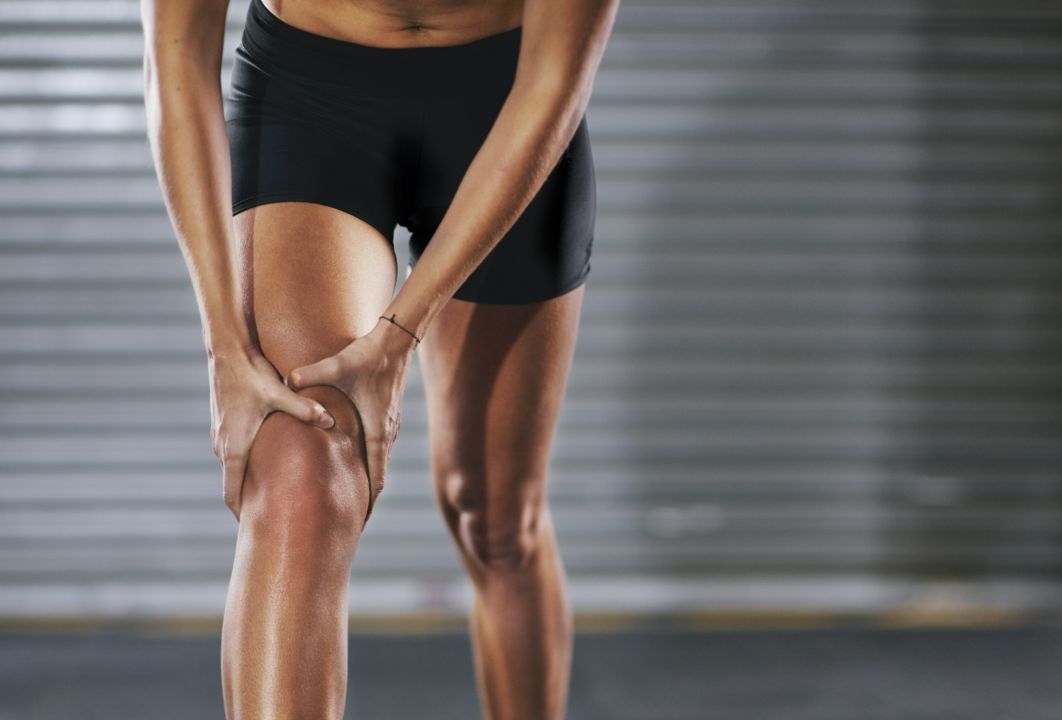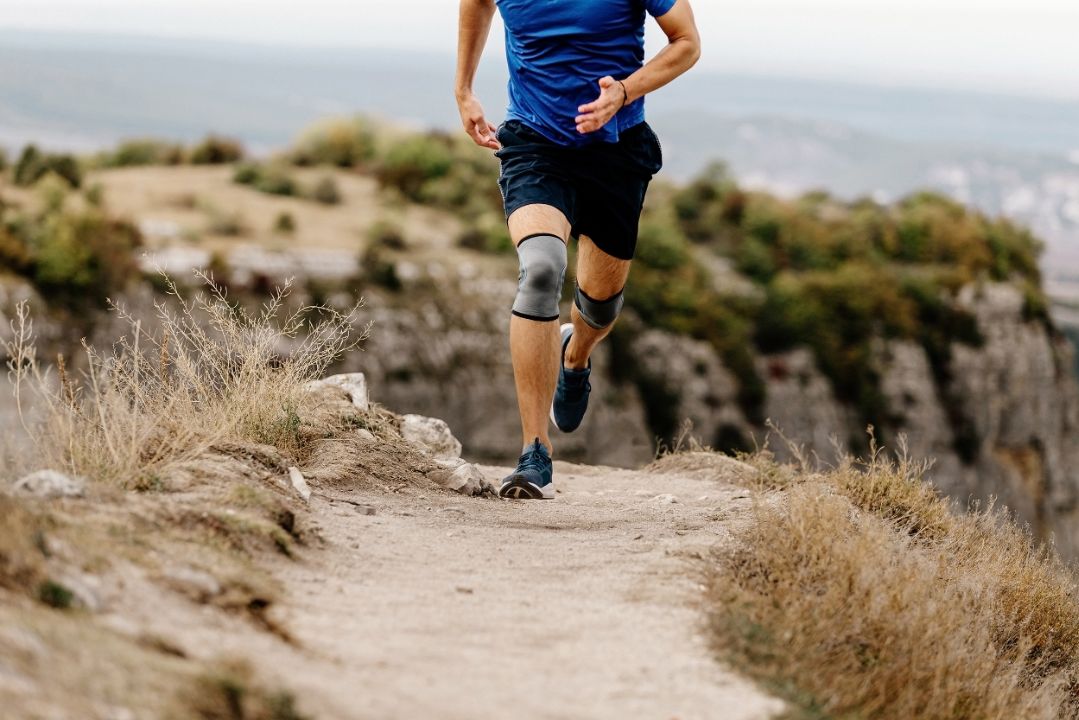Quadriceps tendinopathy is a condition that affects the quadriceps tendon, which connects the quadriceps muscles to the patella (kneecap). Individuals who participate in activities that involve repetitive jumping or running are at higher risk of developing this condition. Common symptoms include pain, tenderness, and weakness in the affected area.
Diagnosing quadriceps tendinopathy involves a combination of physical examinations, imaging tests, and medical history reviews. Treatment options vary depending on the severity of the condition and may include rest, physical therapy, medication, and surgery. Rehabilitation exercises are also essential in recovery, and proper training techniques can help prevent future occurrences.
Quadriceps tendinopathy is a common condition that affects the quadriceps tendon, which connects the quadriceps muscles to the kneecap. The condition is usually caused by overuse, repetitive stress, and improper training techniques.

Photo Credit: YuriArcursPeopleimages, Envato
Some common symptoms of quadriceps tendinopathy include pain, stiffness, swelling, and weakness in the affected knee. The pain may worsen with activity and can be particularly severe after prolonged sitting or standing.
This condition can also lead to significant reductions in knee function, making it difficult for individuals to perform simple everyday tasks, such as walking, climbing stairs, and standing up from a seated position.
Quadriceps tendinopathy is typically caused by overuse of the quadriceps tendon, but it can also be the result of muscle imbalances or improper training techniques. Here are some of the most common causes of quadriceps tendinopathy:
In addition to these factors, certain medical conditions, such as rheumatoid arthritis or diabetes, can also contribute to the development of tendinopathy.
Diagnosing quadriceps tendinopathy requires a thorough physical examination and a review of the patient’s medical history. During the exam, the physician will look for tenderness, swelling, and signs of inflammation in the affected area. They may also move the patient’s leg in various positions to test for weakness or pain.
In addition to the physical exam, imaging tests may be used to diagnose this condition. X-rays, ultrasounds, and MRIs can all provide detailed images of the quadricep tendon, allowing physicians to identify any tears or other damage.
If a patient experiences sudden and severe pain in their quadriceps may indicate a quadriceps tendon tear rather than tendinopathy. Other symptoms of a tear include a popping sensation and difficulty walking or standing. If a tendon tear is suspected, patients may require immediate medical attention and surgery to repair the damage.
The treatment for quadriceps tendinopathy will depend on the severity of the injury. In milder cases, conservative treatment options such as rest, ice, compression, and elevation (RICE) can help to reduce inflammation and pain. Over-the-counter pain medications and nonsteroidal anti-inflammatory drugs (NSAIDs) can also effectively manage pain and inflammation.
Physical therapy is another option, which can help to strengthen the quadriceps muscles and improve flexibility. A physical therapist can create a customised exercise program tailored to the individual’s needs. In some cases, assistive devices, such as braces or crutches, may be recommended.
A doctor may prescribe medication to manage pain and inflammation in more severe cases. Corticosteroid injections can effectively reduce inflammation but are typically only recommended for short-term use. Platelet-rich plasma (PRP) injections, which use the patient’s own blood to promote healing, may also be an option for some individuals.
Surgery is typically only considered a last resort for individuals with severe condition that does not respond to other treatment options. The type of surgical intervention will depend on the specific needs of the individual and can range from minimally invasive procedures to more extensive surgeries.
Regardless of the treatment option, rest and rehabilitation are essential to the recovery process. A healthcare professional can guide appropriate exercises and rehabilitation techniques to help strengthen the quadriceps tendon and prevent further injury.
Rehabilitation is an essential component of recovery for individuals with quadriceps tendinopathy. The primary goal of rehabilitation is to strengthen the quadriceps tendon and surrounding muscles while reducing pain and inflammation.
Physical therapy is often recommended to address this condition as it can aid in restoring the affected area’s strength and function. A physical therapist will develop an individualised treatment plan that may include stretching, range-of-motion, and strengthening exercises.
In addition to these exercises, your physical therapist may recommend other exercises to strengthen the hips, hamstrings, and calf muscles, as these muscles also play a crucial role in supporting the quadriceps tendon.
Rehabilitation exercises can help prevent the recurrence of quadriceps tendinopathy. It is recommended to continue these exercises even after the pain has resolved to maintain strength and flexibility to prevent future injuries.
It is vital to work with your physical therapist to determine the appropriate exercises for your situation and ensure proper technique and progression.

Photo Credit: realsportsphotos, Envato
Preventing quadriceps tendinopathy involves proper training techniques, adequate rest, and ongoing management. Ensuring that your training program includes various exercises targeting the quadriceps muscle group can help prevent overuse injuries. Gradually increasing the intensity and duration of your workouts, rather than pushing yourself too hard too quickly, can also reduce the risk of developing this condition.
Here are some tips to help prevent quadriceps tendinopathy:
If you have experienced quadriceps tendinopathy, ongoing management is crucial for preventing future injuries and ensuring a successful recovery. This may involve adjusting your training program, modifying your lifestyle or work environment, and continuing with rehabilitation exercises to strengthen the quadriceps tendon and surrounding muscles.
The outlook for individuals with quadriceps tendinopathy varies depending on the severity of the injury, the extent of damage to the quadriceps tendon, and the effectiveness of treatment and rehabilitation. With proper management and a commitment to ongoing care, most individuals with quadriceps tendinopathy can expect to fully recover and return to their normal activities.
If you suspect you may have quadriceps tendinopathy, or if you have experienced persistent pain or discomfort in your quadriceps muscle group, it is important to consult with a healthcare professional for an accurate diagnosis and appropriate treatment plan.
Quadriceps tendinopathy refers to a condition that involves pain, inflammation, or injury to the quadriceps tendon, which connects the quadriceps muscles to the kneecap (patella).
Symptoms of quadriceps tendinopathy may include pain and tenderness around the front of the knee, swelling, difficulty straightening the knee, and weakness in the quadriceps muscles.
Quadriceps tendinopathy can be caused by factors such as repetitive overuse, muscle imbalances, improper training techniques, and sudden increases in physical activity.
Quadriceps tendinopathy is diagnosed through physical examinations, imaging tests (such as ultrasound or MRI), and a thorough review of the patient’s medical history and symptoms.
Treatment options for quadriceps tendinopathy may include rest, physical therapy, medication for pain and inflammation, and in some cases, surgical interventions.
Yes, rehabilitation exercises play an important role in the recovery from quadriceps tendinopathy. These exercises strengthen the quadriceps tendon and surrounding muscles to improve function and reduce pain.
While it may not always be possible to prevent quadriceps tendinopathy, individuals can reduce their risk by using proper training techniques, gradually increasing physical activity levels, and listening to their body’s signals to avoid overuse or strain.
With proper treatment and management, individuals with quadriceps tendinopathy can experience relief from symptoms and improve their overall function. Ongoing management and adherence to rehabilitation exercises are essential for the long-term prevention of recurrence.